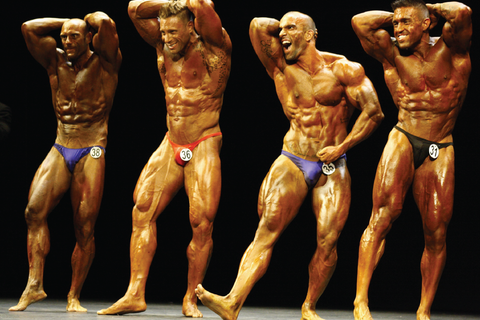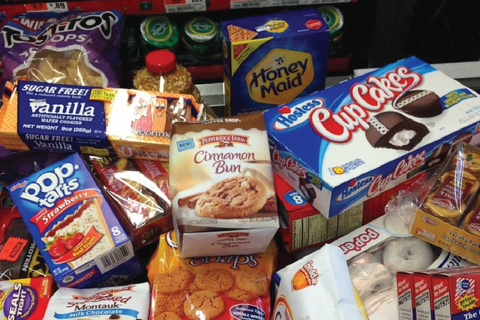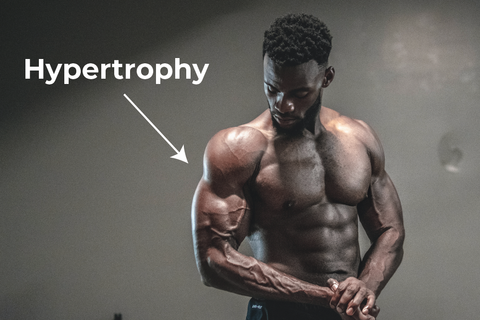Building Muscle on Keto - Keto Bodybuilding Nutrition and Workout Plan
Can you build muscle without carbs?
Let’s start with the facts. You can build muscle on a ketogenic diet. And you don’t need any added carbs to do it.
Don’t believe me?
Just look at any of the countless bodybuilders who have built and maintained muscle on a low carb, ketogenic diet. Or…just keep reading. Because we’ve done the work - so you don’t have to.
In this article, you’ll learn everything you need to know about how to build and maintain muscle on a ketogenic diet. We’ll tell you the secrets to building muscle the smart way - and how to support your gains with a low carb, keto diet.
OK then, let’s get started!

A Ketogenic Diet for Bodybuilding
When you start eating a ketogenic diet, there’s a real temptation to aim for the highest ketone values possible. The ketone blood meter and instagram community make it easy to gamify your diet. And this leads many people to continually increase their fat intake in an endless pursuit of higher and higher ketone values.
Don’t do this.
If you want to build muscle on keto, you need to resist the temptation to maximize your ketones. You need to set aside any feelings of keto envy, and commit to a macronutrient ratio that supports your bodybuilding goals.
Here’s how to do it...
How to Gain Muscle on Keto
If you’re looking to build muscle on any diet, the most important thing you can do is eat more protein. The amount of protein you eat directly affects your ability to build muscle and shred body fat. In fact, even in a calorie deficit, higher protein intake can help you build and maintain muscle mass!
In 2016, researchers at McMaster University published a study showing that - even when calories are kept equal - higher protein consumption leads to greater fat loss and increased muscle mass.
In the study, 40 young men underwent a grueling month of intense diet and exercise. The men were split into 2 groups - with both receiving 40% less calories than their daily maintenance amount. The only difference between the two groups was this: one group had a higher protein intake, and the other had a lower protein intake.
All other variables were controlled for and kept constant. And at the end of the study, here’s what happened...
- The higher protein group gained an average of 2.5lbs of muscle, while the lower protein group maintained or lost their original muscle mass.
- The higher protein group lost an average of 10.5lbs of fat, while the lower protein group lost only 8lbs on average.
So...the science is clear.
If you want to build and maintain muscle mass - you need to increase your protein. And this idea isn’t just a scientific consensus, it’s a universally accepted principle in the bodybuilding community. That’s why you’ll often hear bodybuilders quote this age-old wisdom, “when life gives you lemons...ask for something higher in protein!”

So...how much protein is enough protein?
For beginners, start with at least 0.5g grams of dietary protein per lb of body weight. And once you’re training hard, we recommend 1.0-2.0 grams to build and maintain serious muscle mass.
Remember, if you're in deep ketosis and maintaining very high ketone blood values, it's going to be very difficult to build muscle. But if you increase protein and maintain lighter ketosis, you'll have no problem supporting significant keto gains!
And, of course, if you're looking for keto-friendly, high protein foods - check out our Protein Pastry and Protein Sweet Rolls.
Keto and Low Carb Bodybuilding
In the past, fat was widely viewed as a villain in the bodybuilding community. But the real villain of bodybuilding is a diet that is high in fat AND carbs. Both macronutrients are primarily used by your body as fuel, rather than building lean muscle. So if your diet is mostly fat and carbs, you’ll be severely hurting your ability to build muscle and shred body fat.

Pictured: A cabinet FULL of low-fat foods! :)
Bodybuilders have always understood this fact. And that’s why a traditional (non-keto) bodybuilding diet is high in protein and carbs, and very low in fat.
And here’s the truth…
If you train hard and control your calories, a high carb, high protein diet can give you an impressive physique. But if you want to build muscle and enjoy the numerous health benefits of a ketogenic diet, you’ll need to significantly cut carbs.
When you significantly cut carbs (below 50g per day), there is a real adaptation period that can discourage many bodybuilders from maintaining a keto diet. During this period, muscles can appear flat as the body depletes glycogen stored in lean muscle and adapts to using fat as a major fuel source. And that leads many bodybuilders to abandon their low carb, keto diet early on in the process.
But for those that adjust and become keto-adapted, the health benefits are very real. You’ll likely feel sharper and more mentally focused, you’ll be able to drop fat without feeling hungry from your caloric deficit, and you’ll no longer be a victim of the “mid-day crash” that carb-eaters so painfully endure.
By cutting carbs and increasing your protein, you can enjoy bodybuilding success AND the amazing benefits of a keto diet. You just need to make sure you do one more thing...
Avoid Keto Muscle Loss with a Calorie Surplus
Your body needs fuel. And if you’re not taking in enough calories to support your fuel needs AND support muscle growth, your body will prioritize energy over muscle - every time. Which means, if you’re not taking in enough calories, you’ll never be able to maximize muscle gain.
To maximize muscle gain on a keto diet (or any diet), you need a calorie surplus. And here’s a hard truth for some: you will gain some body fat in addition to the muscle you gain. But you can minimize this body fat by keeping carbs low and embracing the muscle-building power of a modified keto diet. And to recap what that “modified” keto diet is, here are your 3 diet tips to remember for keto bodybuilding success:
1. Keep protein high to build muscle
2. Cut carbs to reduce body fat and maintain nutritional ketosis
3. Eat enough calories to support your keto gains
And...that’s it! If you follow this diet plan, you’ll be able to build muscle and eliminate body fat on a keto diet. Well, kind of…
You also need to do the hard part: work out.
How to Actually Work Out
We’ve all heard the term “work out” before, but few of us are as intentional as we should be when it comes to physical fitness. If your goal is to build muscle on a ketogenic diet, you need to do more than just vaguely “work out”, you need to train with one major goal in mind: hypertrophy.

Hypertrophy is the thickening of muscle fibers. This process is what gives bodybuilders their big muscles and impressive physique. It’s triggered by the daily stressors they place on your bodies in the form of intentional workouts. So if you want to build muscle - on ANY diet plan - you need to work out.
While there’s still much undiscovered about the process of hypertrophy, we do know is this...
To encourage hypertrophy and maximize your keto gains, you should focus on 3 types of physical conditioning: mechanical tension, muscle damage, and metabolic stress.
Can you get Stronger on the Keto Diet?
Yes, but there's a few important concepts to understand. Let's start with perhaps the most impactful: Mechanical tension.
Mechanical tension is the most obvious form of exercise you can do to build muscle. It involves lifting heavy things to apply intense stretching forces on your muscles.
Over time, the consistent application of these stretching forces is what leads to serious muscle growth.
So if you want to get stronger on a keto diet, you need to use mechanical tension exercises correctly. This means lifting heavy weights with no more than 15 reps at a time. This does not mean doing 50 reps of a lighter weight and calling it a workout.
Your goal is to generate as much force as possible in each rep - and over time - build up to higher and higher weights. That way, you can maximize the applied force and thus maximize your gained muscle mass.
But here’s where things get really interesting…
Muscle Damage and Keto Post-Workout Success
While lifting heavy weights is the best way to get stronger, it’s not actually the lifting of the weight that generates most of your gains. It’s the lowering of the weight!
Imagine a standard bicep curl. There’s the concentric (positive) phase, where you curl the weight up toward your shoulder. And then there’s the eccentric (negative) phase, where you straighten your arm and lower the weight back down.
Studies have shown that it’s actually the eccentric phase that is responsible for the majority of your muscle-building. And that’s because more muscle damage occurs during this phase, since the mechanical forces are applied to your muscles while in the extended position.
Muscle damage is critical to building muscle - especially the contractile proteins that make up the solid mass of your muscles. But too much muscle damage can inhibit your ability to train effectively. Thus, you’ll want to segment your workouts so that you’re damaging different muscle groups on different days.
This gives your muscles time to grow and recover between training sessions, and allows you to fully focus on correct form - especially during the eccentric phase. And since you’re following our muscle-building keto diet plan (see above), you’ll have plenty of protein to support your recovery and continued gains!
Metabolic Stress and Bulking on Keto
Metabolic stress involves limiting the energy supply to your muscles during a set. This is responsible for the “pump” and “burn” feelings so often described by bodybuilders and casual gym-goers alike. It’s believed that metabolic stress helps build the sarcoplasmic elements of the muscle as well as the contractile proteins - meaning that it contributes to both size and endurance.

You’ve been told that the “burn” comes from a buildup of lactic acid. But this isn’t actually true. It’s actually the hydrogen ions from cellular metabolism that causes this burning pain. And if you’re feeling this sensation, it means that you’re on your way to making some serious gains.
To maximize your metabolic stress, you’ll need to maintain constant tension on your muscles throughout each set. You can do this by pumping each rep with consistent frequency and not stopping mid-set to recover or catch your breath.
Push through the set and maintain the tension to achieve your maximum burn!
Summary: Keto Diet BodyBuilding Success
Many people associate low carb, ketogenic diets with weight loss. And that makes sense, because so many people are currently implementing a keto diet to lose weight. But the truth is, you can enjoy the amazing health benefits of a ketogenic diet and gain muscle. You just need to modify your diet to support muscle growth and train effectively to maximize your keto gains!
If you're looking to start on your keto bodybuilding journey, look to our keto-friendly lineup of Protein Pastries, Protein Sweet Rolls, and Nut Butters to support your diet along the way.
If you have any problems building muscle on a ketogenic diet, please reach out to us at any time. We’re about giving you the tools you need to achieve optimal health. And that starts with having the best information.

